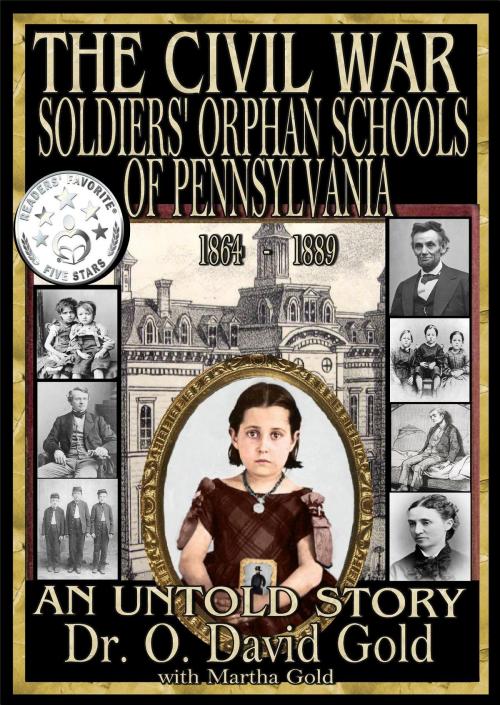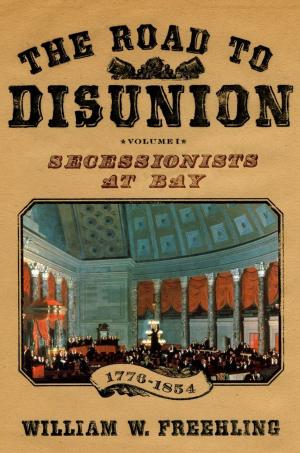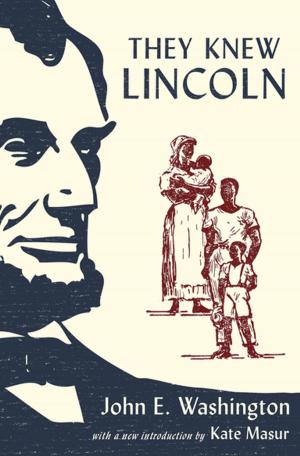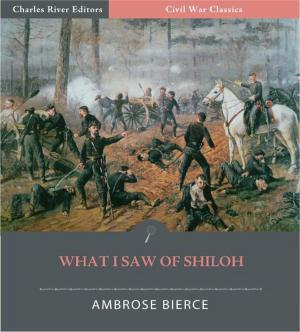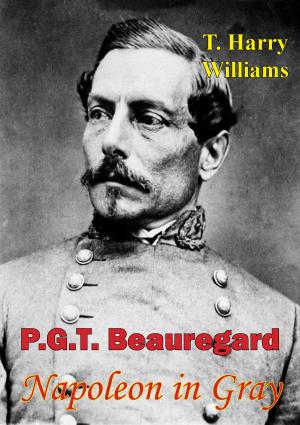The Civil War Soldiers' Orphan Schools of Pennsylvania 1864-1889
Nonfiction, History, Americas, North America, United States, Civil War Period (1850-1877), 19th Century| Author: | O. David Gold | ISBN: | 9781943293056 |
| Publisher: | Pendragon Publishers | Publication: | April 7, 2016 |
| Imprint: | Pendragon Publishers | Language: | English |
| Author: | O. David Gold |
| ISBN: | 9781943293056 |
| Publisher: | Pendragon Publishers |
| Publication: | April 7, 2016 |
| Imprint: | Pendragon Publishers |
| Language: | English |
This is the only modern, published account of the Soldier’s Orphan Schools of Pennsylvania. A bureaucrat of the system wrote a so-called history in 1873 but it is very self-serving and devoid of any critical analysis. Also included, a bonus feature on the Ill-Fated Gettsyburg Orphanage.
The Soldier’s Orphan Schools of Pennsylvania, 1864- 1889 were unique to the history of the nation. They were the first historical example of a government attempting to nurture and educate the children of soldiers killed in war. During the 25 years of its existence, over ten thousand children passed through the Soldiers' Orphan Schools of Pennsylvania.
Established largely through the efforts of Governor Andrew Gregg Curtin, they were not orphanages but privately owned boarding schools funded by the state which took in soldiers' orphans between the ages of eight and sixteen.
While they designed a rigid academic plan of studies, the well-known professional educators who supervised the system for the state were mainly interested in the moral development of these children from the lower strata of society. Discipline, hard work, and obedience were the principal aims of those who ran the schools. Intellectual development was always secondary.
Located mainly in the rural and agricultural areas of the state, the Soldier’s Orphan Schools were challenged by the new economic and social forces of the latter nineteenth century.
In a state renowned for its savage partisan politics, the Pennsylvania Soldiers' Orphan Schools got emeshed in a so-called scandal which involved the Democratic governor and the GOP opposition. Charges of neglect and fraud dominated the political press for months. This episode of 1886 soured the public on the system of relief established during the Civil War.
An add-on chapter concludes the book - The Ill-Fated Gettysburg Orphanage. This institution was like a counterpoint to the S.O.S. The latter was a government sponsored creation. The orphanage in Gettysburg for soldiers’ orphans was a private endeavor with no government supervision or financial involvement.
This is truly an amazing story beginning with the battle of Gettysburg, the discovery of a dead soldier clutching the picture of his three children, the search for his identity, the sale of the picture to raise funds for an orphanage, its life from 1866-1877, and its closing largely because of a “cruel headmistress” who among many “evil acts” kept her charges in an underground torture chamber. This section features the Lunden Family Letters, printed for the first time. The three Lunden children corresponded with their mother while under the care of the notorious headmistress, Rosa Carmichael.
The book is enhanced by 170 photographs and drawings.
This is the only modern, published account of the Soldier’s Orphan Schools of Pennsylvania. A bureaucrat of the system wrote a so-called history in 1873 but it is very self-serving and devoid of any critical analysis. Also included, a bonus feature on the Ill-Fated Gettsyburg Orphanage.
The Soldier’s Orphan Schools of Pennsylvania, 1864- 1889 were unique to the history of the nation. They were the first historical example of a government attempting to nurture and educate the children of soldiers killed in war. During the 25 years of its existence, over ten thousand children passed through the Soldiers' Orphan Schools of Pennsylvania.
Established largely through the efforts of Governor Andrew Gregg Curtin, they were not orphanages but privately owned boarding schools funded by the state which took in soldiers' orphans between the ages of eight and sixteen.
While they designed a rigid academic plan of studies, the well-known professional educators who supervised the system for the state were mainly interested in the moral development of these children from the lower strata of society. Discipline, hard work, and obedience were the principal aims of those who ran the schools. Intellectual development was always secondary.
Located mainly in the rural and agricultural areas of the state, the Soldier’s Orphan Schools were challenged by the new economic and social forces of the latter nineteenth century.
In a state renowned for its savage partisan politics, the Pennsylvania Soldiers' Orphan Schools got emeshed in a so-called scandal which involved the Democratic governor and the GOP opposition. Charges of neglect and fraud dominated the political press for months. This episode of 1886 soured the public on the system of relief established during the Civil War.
An add-on chapter concludes the book - The Ill-Fated Gettysburg Orphanage. This institution was like a counterpoint to the S.O.S. The latter was a government sponsored creation. The orphanage in Gettysburg for soldiers’ orphans was a private endeavor with no government supervision or financial involvement.
This is truly an amazing story beginning with the battle of Gettysburg, the discovery of a dead soldier clutching the picture of his three children, the search for his identity, the sale of the picture to raise funds for an orphanage, its life from 1866-1877, and its closing largely because of a “cruel headmistress” who among many “evil acts” kept her charges in an underground torture chamber. This section features the Lunden Family Letters, printed for the first time. The three Lunden children corresponded with their mother while under the care of the notorious headmistress, Rosa Carmichael.
The book is enhanced by 170 photographs and drawings.
